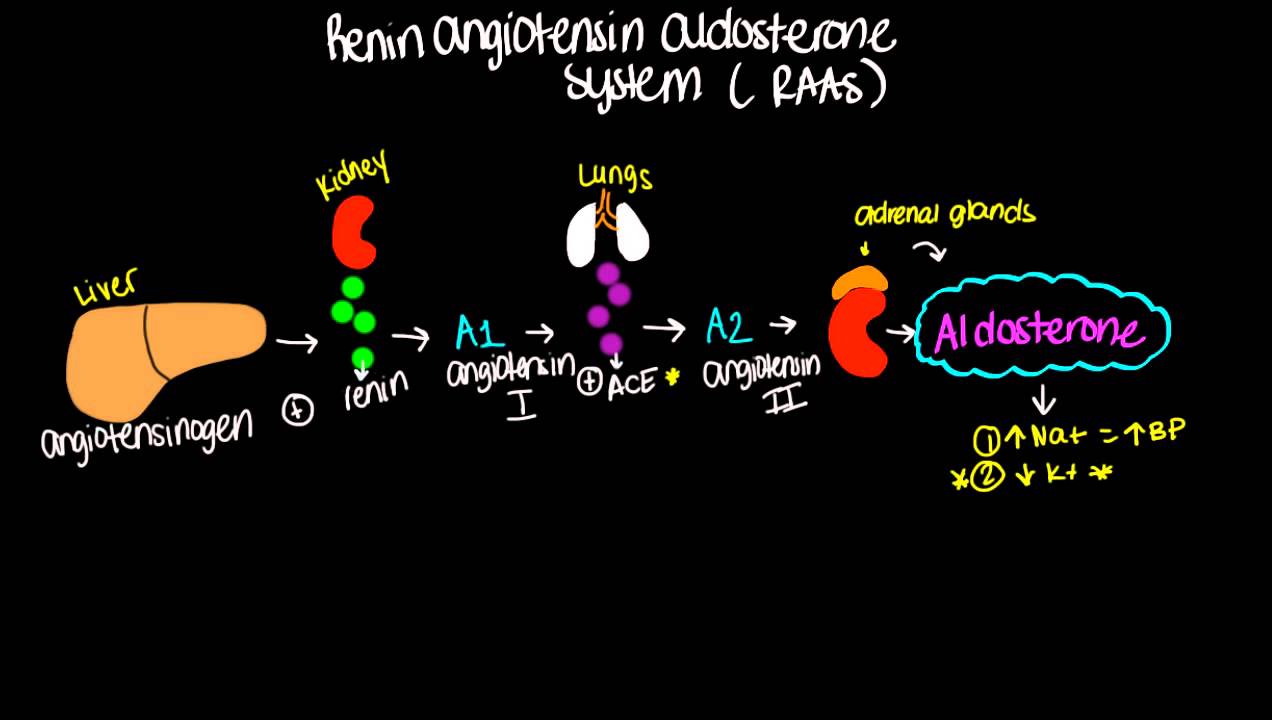“Silent killer ” seems to be the right name for hypertension. Hypertension or high blood pressure is a disease that causes a heart attack and increases the risk of death without any symptoms. Indonesia itself has a fairly high prevalence, and it increased from 2013, which only ranged from 25.8% to 34.1% in 2018, according to the Ministry of Health of the Republic of Indonesia. People with hypertension generally have blood pressure at a value of 140/90 mmHg or more. This condition will be dangerous because it will cause the emergence of diseases such as stroke, kidney failure, and heart failure. So to overcome these problems, drug therapy is needed to reduce the blood pressure rate.
Renin angiotensin aldosterone system (RAAS) provides an important role in regulating blood pressure and maintaining fluid balance so that it can be used as a therapeutic target to overcome hypertensive problems. In RAAS , angiotensin-I converting enzyme(ACE) will catalyze angiotensin I (Asp-Arg-Val-Tyr-Ile-His-Pro-Phe-His-Leu) to angiotensin-II (Asp-Arg-Val-Tyr-Ile-His-Pro-Phe), from decapeptide to octapeptide. This angiotensin-II stimulates the release of aldosterone and antidiuretic or vasopressin hormones and increases sodium and water retention and vasoconstrictors, which will directly increase blood pressure. So the work of ACE must be inhibited by an inhibitor compound. Several synthetic ACE inhibitors have been found such as captopril, lisinopril, enalapril, benazepril which have side effects such as dizziness, coughing, or rashes.
Protein is a macromolecule providing energy and essential amino acids for growth and maintaining normal functions of the body. Protein with high molecular weight must be broken down by a hydrolysis activity to produce a bioactive peptide consisting of several amino acid arrangements. These bioactive peptides are produced through enzymatic hydrolysis using digestive enzymes such as thermolysin, chymotrypsin, and pepsin. In the digestive system, this bioactive peptide can easily be absorbed through the intestines, enter the blood, and give effect to health. Therefore, bioactive peptides currently receive great attention from researchers as they want to explore their potential further as a source of ACE inhibitors.
The search for peptides that can inhibit ACE activity has been intensified, especially from fisheries and marine sources that have emerged. Reliable testing to determine the ability of peptide to inhibit ACE activity is a major concern. Determination of in vitro ACE inhibitor peptides is preceded by enzymatic digestion or microbial fermentation which is then followed by structural analysis and chemical synthesis of active peptides. The technique used to evaluate ACE inhibitory activity of peptides must be simple, sensitive, and reliable. Some of these methods have been developed, such as spectrophotometry, high performance liquid chromatography(HPLC), fluorometric capillary electrophoresis, and radiochemistry. This method involves hydrolysis of hippuryl-histidyl-leucine (HHL) by ACE to hippuric acid (HA). The amount of HA produced from HHL correlates directly with ACE activity. The amount of HA formed was determined by measuring the absorbance at 228 nm (maximum absorption of HA). Although spectrophotometry is useful, it is time consuming, complicated, and cannot detect trace amounts of samples.
HPLC is a common method for determining ACE inhibitory activity. HPLC has been used for decades. This method requires the extraction of products from the reaction mixture using organic solvents, which limits the number of samples that can be analyzed per day. The substrate that is often used in ACE inhibition testing using HPLC is HHL. Another substrate that can be used is furanacryloyl-L-phenylalanylglycyl-glycine (FAPGG). Because the prices of both substrates, HHL and FAPGG, are similar, the HPLC method is more profitable than spectrophotometry, because it requires less labor and has higher yields than spectrophotometry.
Marine organisms produce several sources of functional ingredients such as bioactive peptides, enzymes, polyunsaturated fatty acids (PUFA), vitamins, minerals, phenolic phlorotannins, and polysaccharides. Furthermore, marine organisms promise excellent prospects for the development of industries such as drugs, cosmetics, chemicals, nutritional supplements, and therapeutic agents. Natural inhibitors from fisheries and marine organisms are believed to have no side effects, safer and healthier compared to synthetic drugs. In recent years, research on the potential of fisheries and marine as an ACE inhibitor has been studied, ranging from a soft-shelled turtle, fermented mackerel, sardine muscle, Alaskan Pollack skin, marine shrimp, salmon chum, yellowfin, squid skin collagen, Spirulina platensis, to Chlorella vulgaris.
For example, soft-shelled turtle has been studied as a potential ACE inhibitor peptide because it has been widely used as a tonic food in China. The IVRDPNGMGAW peptide obtained from egg white has an IC50 value of 4.39 μM. Peptides are identified as competitive inhibitors. On the other hand, the AKLPSW peptide obtained from the egg yolk also had ACE inhibition activity with an IC50 value of 15.3 µM and was identified as a non-competitive inhibitor. AKLPSW also significantly reduces systolic blood pressure(SBP) with a reduction of around 13 mmHg at 6 hours after oral administration, which shows an antihypertensive effect on the AKLPSW peptide. Marine organisms are continuous source of ACE inhibitory peptides for the production of drugs and nutraceuticals on an industrial scale. Because of the importance of ACE inhibition for the future pharmaceutical and nutraceutical industries, the peptide‘s purification technique to produce pure peptides is very important. Therefore, research on the purification of bioactive peptides must continue to trigger researchers to conduct further research.
Author: Dwi Yuli Pujiastuti
Related articles at:
Pujiastuti, DY; Amin, MNG; Alamsjah, MA; Hsu, J.-L. Marine Organisms as Potential Sources of Bioactive Peptides that inhibit the Activity of Angiotensin I-Converting Enzymes: A Review. Molecules 2019 , 24, 2451-2466.
https://www.mdpi.com/1420-3049/24/14/2541/htm
Pujiastuti, DY; Hsu, J.-L. The potential of peptides derived from chymotrypsin hydrolysis soft against the angiotensin I converting enzyme. IOP Conference Series: Earth and Environmental Science 2019 , 236
https://iopscience.iop.org/article/10.1088/1755-1315/236/1/012113/pdf
Pujiastuti, DY; Shih, Y.-H .; Chen, W.-L .; Sukoso; Hsu, J.-L. Screening of angiotensin-I converting enzyme inhibitory peptides from soft-shelled turtle yolk using two orthogonal bioassay-guided fractionations. Journal of Functional Foods 2017 , 28 , 36–47.
https://www.sciencedirect.com/science/article/pii/S1756464616303577





